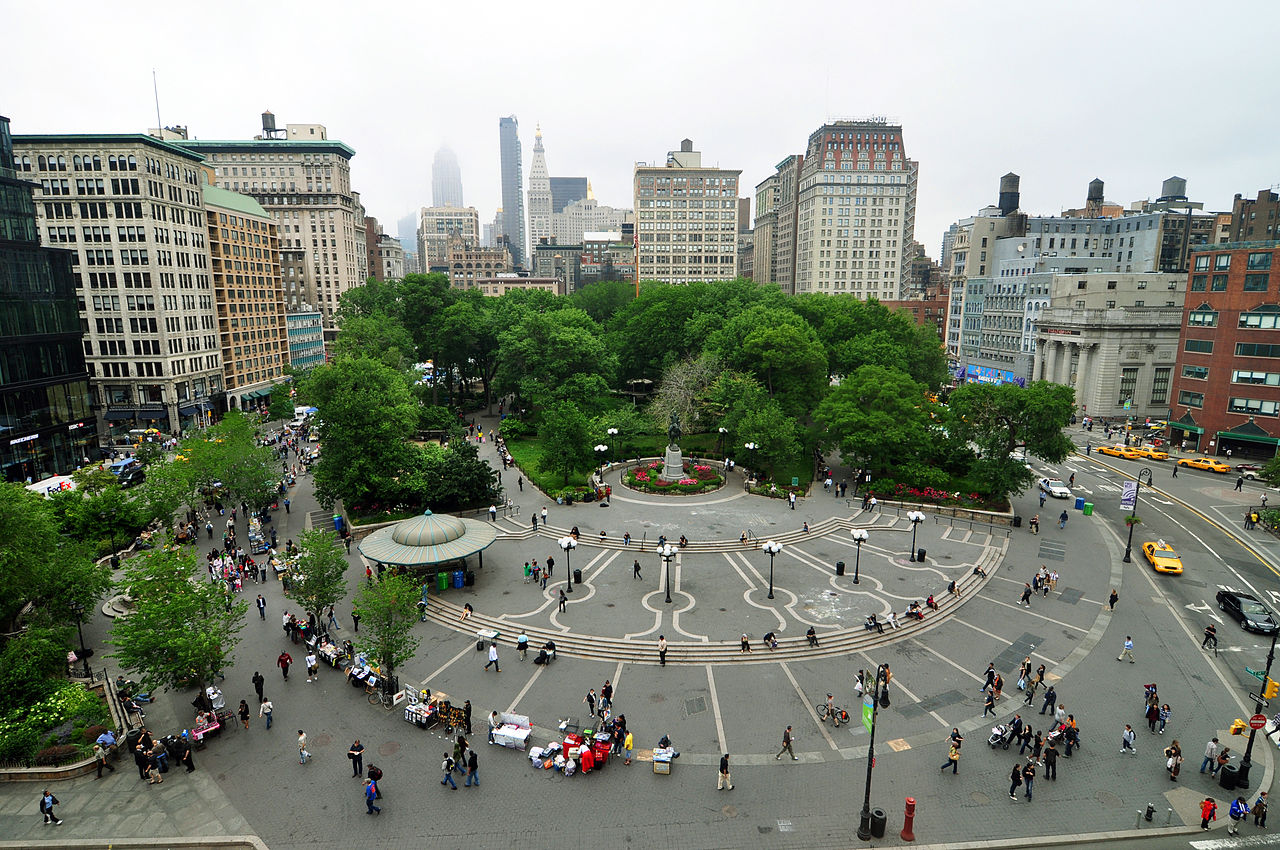by: Adam Roberts
The future of New York’s public space is being hotly debated. Protests and health concerns have changed how architects and policymakers are thinking about public space. As our city finally starts reopening this week, these questions are coming to the fore, but we are witnessing this debate evolve in real time.
The outbreak of protests in response to the killing of George Floyd at the hands of police in Minneapolis, followed by subsequent police brutality, raise larger equity issues about public space. The long history of how public space has been made “defensible” for authorities, particularly to keep out Black people and other people of color and to criminalize public spaces, remains evident. For more on this topic, read AIANY’s June 1 statement on the urgency of dismantling injustice and systemic racism in America.
Prior to the outbreak of widespread protests, there had been a great deal of focus on helping the businesses most impacted by COVID-19. Restaurants have been particularly hard hit financially, with government aid so far being insufficient for many. As a result, the City Council is considering legislation, Int. 1957-2020, to open streets and plazas for outdoor dining. These temporary outdoor dining areas would provide restaurants with desperately needed seated customers, while also providing the public with an additional use for their open space.
Many elected officials and organizations have supported the measure, including AIA New York, which testified last week in support of the bill, expressing that outdoor dining is an important use of open space. Mayor de Blasio has also supported this idea, and has opted to implement a similar measure as soon as the city reaches Phase 2 of its reopening.
This debate on the use of open space for dining is part of a much broader discussion on the future of open space in our city—not to mention, as we’ve seen in the discussions surrounding George Floyd’s murder, what it truly means to be “open.” Throughout much of the crisis, transit advocates pushed the Mayor to open streets to more pedestrian traffic and close them to automobiles. The Mayor has been slow to implement such a program, with wealthier neighborhoods benefitting the most.
These potential changes to how we use of public space in the city as we begin recovering from the COVID-19 pandemic have been shaken up by the painful and necessary surfacing of questions about systemic racism, police violence, and political action on our streets in the past two weeks.
There are limits to what design can do to advance racial justice and impact public health. Yet, designers and policymakers both agree that design can and must be a significant part of the conversation on these and other public space issues. AIANY will continue to advocate for a more equitable use of public space and will keep you updated as further proposals from the city, state, and federal government are released.
Policy Points:
- This week, New York City began Phase I of its reopening. Some non-essential business activity may resume, including construction. Members returning to job sites must adhere to new rules from the state and the NYC Department of Buildings, so please see here for more information.
- New York’s State and Federal primaries are on June 23, 2020 State and Federal primaries. To help prevent the community spread of COVID-19, all registered voters may apply to vote by absentee ballot. Apply for an absentee ballot here.








